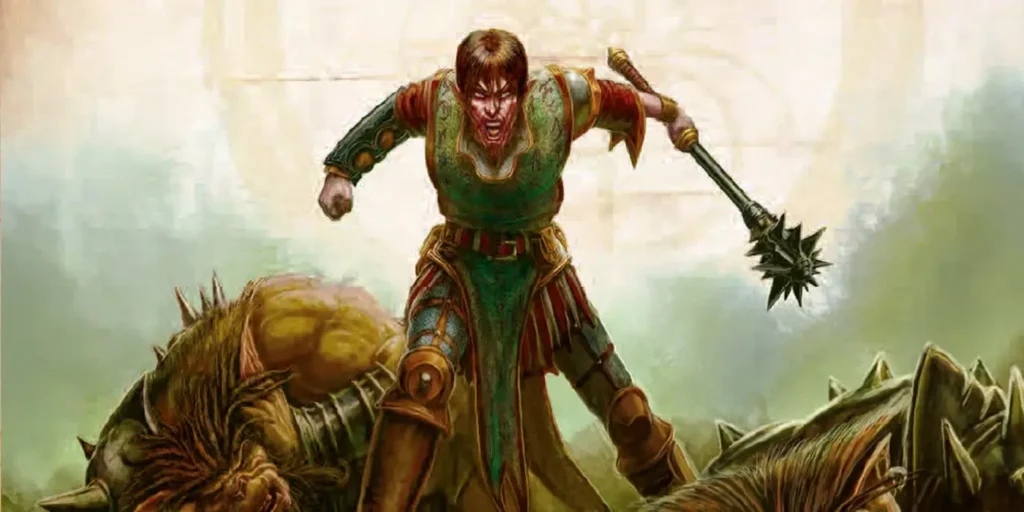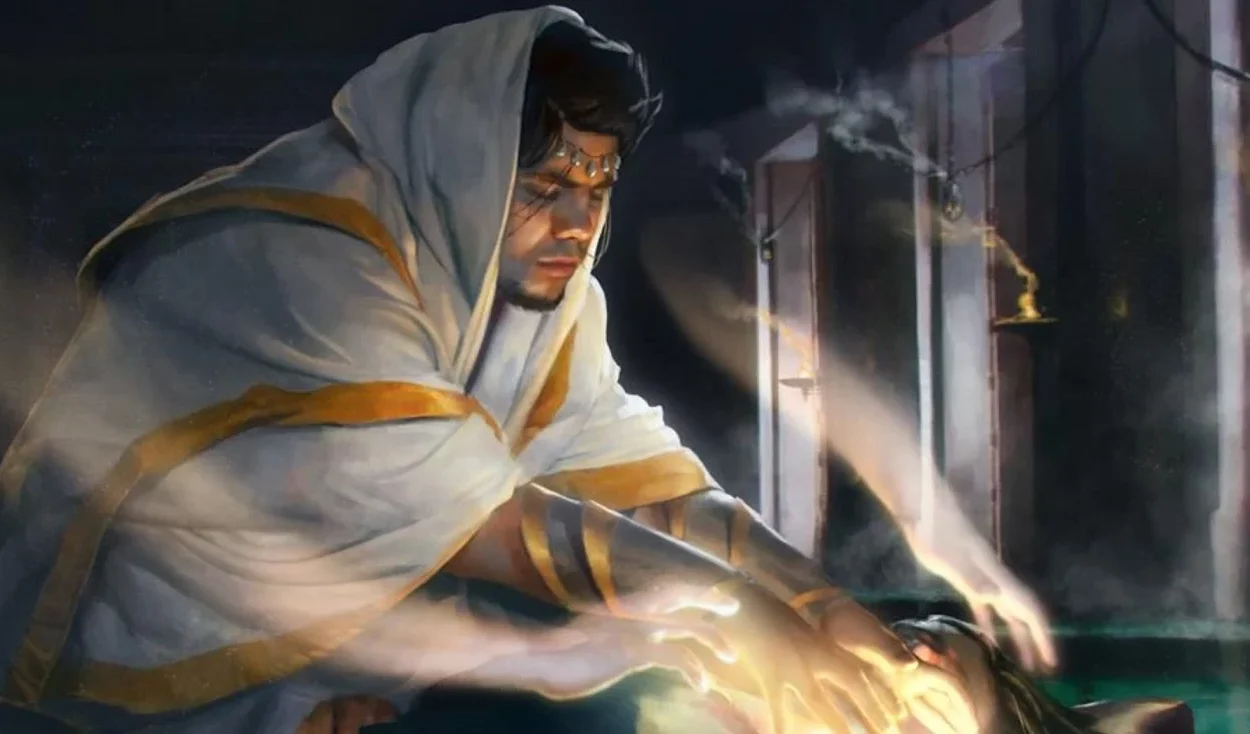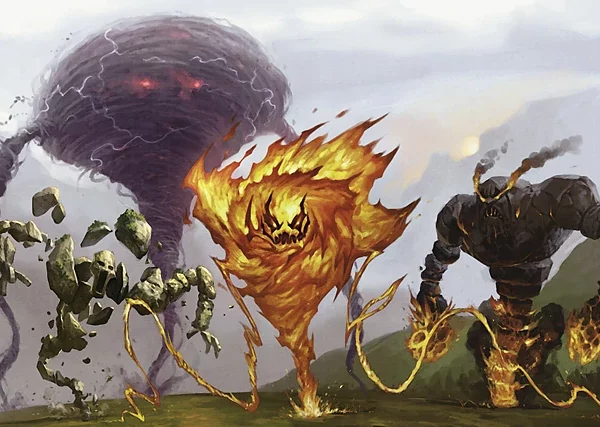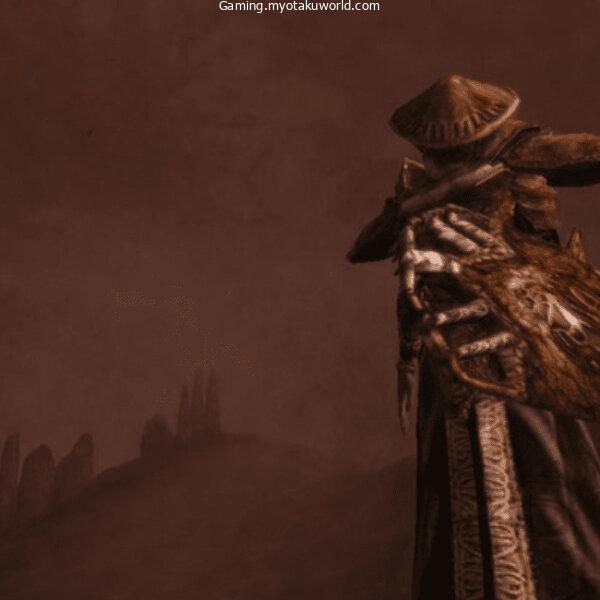Warm light dishes across your body as the streaming of blood begins to slow and wounds gradually begin to close.
A bright, glowing light emanating from the hands of your Cleric turns the pain in your bones to the past.
The healing magic of Dungeons and Dragons is one of the most important ways to keep your group alive.
A typical “adventure day” generally consists of 6-8 combat battles (ranging from moderate to difficult encounters, and occasionally a fatal one) this means that spell slots are scarce, and taking lengthy rests are generally out of the possible.
But what is a “good” healing spells?
The list of spells and spells that be used to heal is very limited.
Actually, I had just enough information to get this list!
However, I ranked these spells with these guidelines in mind:
- How much do you need to be healed?
- How often do I need to use this spell?
- What other benefits can I receive?
- 18. Life Transference
- 17. Gentle Repose
- 16. Aid
- 15. Lesser Restoration
- 14. Spare The Dying
- 13. Goodberry
- 12. Healing Word
- 11. Mass Healing Word
- 10. Healing Spirit
- 9. Cure Wounds
- 8. Prayer of Healing
- 7. Aura of Vitality
- 6. Heroes’ Feast
- 5. Vampiric Touch
- 4. Power Word Heal
- 3. Heal
- 2. Mass Cure Wounds
- 1. Regenerate
How much do you need to be healed?
This is not just about the number of hit points you receive back however, it also includes how many targets you are able to heal.
If two spells are able to heal you for 1d8, and one of them has six targets it’s an easy win, in the majority of cases.
How often do I need to use this spell?
Spells that use higher slots mean that you’re missing out on other spells that are bigger.
If you’re only able to perform one spell of 8th level each day, then is the healing spell worthwhile compared to an easier spell in higher slots?
What other benefits can I receive?
Certain healing spells offer additional benefits, like treating diseases, regenerating legs, or providing some hit points for a short period of time.
All of these aspects are important in the case of spells that only heal.
So, let’s take a dive!
18. Life Transference

Life Transference might come as a surprise to clerics when they see it in their list of abilities.
This Verbal and Somatic Evocation spell at 3rd level takes an action to cast, but its effects happen right away.
With this spell, the person who casts it takes 4d8 points of necrotic damage and the person they cast it on heals for twice as much as the damage the person who casts it took (think lifesteal).
When you use a 4th-level Spell Slot or higher, the damage goes up by 1d8 per level, but the spell can also heal more.
Life Transference is a spell that should only be used as a last resort because of how dangerous it is. After all, spellcasters with low health can die from anywhere between 20 and 80 damage.
No matter what, the amount of healing this can do for a tank or a person who deals damage can easily change the course of a battle.
17. Gentle Repose

People who know how to cast spells might be surprised to see “Gentle Repose” on a list of suggested healing spells.
This 2nd-Level Necromancy ritual (Verbal, Somatic, Material) doesn’t really heal its target, but experienced adventurers might find it useful when dealing with powerful NPCs, especially when other powerful forces are nearby.
Gentle Repose is a spell that can be used on a corpse or other remains. When they touch the body, the spell stops the body from rotting and makes it impossible for it to come back to life for 10 days.
Parties with a dead member can use Gentle Repose to make it take longer to get the parts for Raise Dead, which can be hard to do because it needs so many things.
Gentle Repose can help the party stop major bad guys from summoning a major NPC as an enemy undead, which, let’s be honest, is always a possibility.
16. Aid

Aid is one of the best support spells in D&D 5e, even though it doesn’t heal. This 2nd-level verbal, somatic, and material abjuration spell affects more than one creature for eight hours.
When a spellcaster uses an action to cast Aid, three creatures within 30 feet get an extra 5 Hit Points until the spell ends.
This +5 to Hit Point Maximum might not seem like much, even with the option to increase it by +5 for each Spell Slot used above 2nd Level.
However, when combined with the Temporary HP bonus of feats like Inspiring Leadership, Aid becomes an essential buff before long journeys and boss fights.
15. Lesser Restoration

Even though Lesser Restoration is not a healing spell, it is an important part of any party’s arsenal, especially when facing stronger opponents.
This 2nd-Level Abjuration (Verbal, Somatic) spell is a reminder that stronger opponents don’t rely on brute force as much as they do on status conditions to weaken the party.
Any member of the party can be useless if they are poisoned, paralysed, deafened, or blinded.
With Lesser Restoration, a spellcaster only needs one action to cure a disease or condition by touching a creature with it.
Since the effect happens right away, a party member can quickly and without much worry return to the fight.
14. Spare The Dying

Spare the Dying quickly becomes one of the Cleric’s most important cantrips. This (Verbal, Somatic) Necromancy cantrip can heal any living creature with 0 Hit Points.
Casters just have to touch the target, and the spell’s effects happen right away.
Spare the Dying is a simple spell, but every healer should have it in their arsenal. Players can also choose to get the Magic Initiate feat to get the Cleric’s cantrip “Spare the Dying.”
Under this feat, the once-per-long-rest mechanic of Spare the Dying can save your life when you least expect it.
13. Goodberry

What is it about small, bite-sized food that makes it good for you and helps you feel better?
The Goodberry is a useful 1st-level Transmutation (Verbal, Somatic, Material) spell for people who need to get better quickly.
Goodberry only takes one action to cast, and when it’s done, ten berries appear in the hand of the person who cast it. Each berry can heal 1 HP after being filled with magic for 24 hours.
Even though this healing might not seem like much, it can help a party get back up after being knocked out or even change the course of a battle.
Also, because Goodberry can provide food for a day, adventurers don’t have to carry a tonne of food on long journeys.
12. Healing Word

Source: Player’s Handbook p.250
The first healing spell for everyone!
Since it’s a spell of the 1st level this one won’t win any awards in the near future.
It does the job effectively.
1d4 plus Spellcasting Modifier, which adds another four d4 of healing to each spell slot after the 1st is fairly comparable to the majority of spells at this point in the game.
It is surpassed when your character progresses to more advanced magical abilities.
11. Mass Healing Word

Source: Player’s Handbook p.258
First, of the healing spells that are available for Clerics (and exclusively Clerics), Mass Healing Word isn’t a lot of fun.
With 1d4+ Spellcasting MODIFICATION for at least six different targets.
As a 3rd-level spell, it’s quite a difficult decision to make over the other options available at this point.
10. Healing Spirit

Source: Xanathar’s Guide to Everything p. 175
An interesting addition from Xanathar, Healing Spirit, lets you create tiny spirits that cure the creatures as they go through it.
They also begin their turn in the exact spot as it does for 1d6.
It’s a flexible and sluggish spell that lasts for an entire minute if you are focused.
Since it’s a bonus move you can still perform the cantrip as a regular action.
If you’re a Druid or Ranger in your group it’s a good idea to take advantage of this spell.
9. Cure Wounds

Source: Player’s Handbook p.230
Remember the time when we denigrated Healing Word?
This is why the Cure Wounds spell has the exact same power, but can double heal (1d8 instead of 1d4).
Cure Wounds’ disadvantage is that it’s the result of a Touch spell, which means that the person casting it can’t be too far from his group.
This isn’t much of a problem, though, because this ability is only available for more powerful classes like Paladins, Rangers, and Druids, who tend to be on the frontline.
This allows you to let your bards and clerics relax and reserve their spell slots to have better alternatives.
8. Prayer of Healing

Source: Player’s Handbook p.267
Prayer of Healing among the very first “big” healing spells Clerics are able to access as a second-level spell.
It’s a great healing spell (outside of combat, that is) that can take care up to six targets at 2d8 and your modifier.
This spell is nothing to sniff at.
As you play spell slots that are above the 2nd level, you gain the additional benefit of d8, which lets the spells to expand pretty easily into higher levels.
One of the major drawbacks for it’s lengthy casting time.
After 10 minutes, it’s impossible to use for combat.
7. Aura of Vitality

The source: Player’s Handbook p. 221
This tiny book offers two of the main requirements to make a successful healing spell: range and dice.
Any target that is within 30 yards can be given an additional 2d6 healing as a bonus action.
That’s a lot because this is a one-time use spell for Paladins.
It is possible that you will need to keep your focus for the duration of the spell (which let’s face it should be fairly easy to do as you become a Paladin).
But the power and flexibility the spell offers are amazing.
6. Heroes’ Feast

Source: Player’s Handbook p. 251
Another bizarre magical spell that technically heals, Hero’s Feast lets you create a delicious mukbang of food for your event which takes about an hour for the entire duration (twelve people which means that your DM will probably cry at the end of every session).
When the hour ends the participants will gain 2d10 hit points temporarily as well as heal the equal amount.
Hero’s Feast isn’t a spell you’ll ever cast during combat (it takes just ten minutes to cast the spell and the feast that lasts for an hour).
It’s also a great incentive for your team prior to an epic fight.
5. Vampiric Touch

Source: Player’s Handbook p.285
The science behind it is that a life-sucking spell can help you.
Therefore, this spell appears on the list of technicalities!
If you hit this, you’ll take 3d6 of damage as well as heal at half the amount.
You can repeat the same move for up to a minute if you maintain focus at melee distance.
The main drawback of this time is its range of effects, in actuality.
This spell is only accessible to wizards or warlocks.
Both of these squishy classes will need to get the most out of the effort to get in close proximity to their foes.
4. Power Word Heal

Source: Player’s Handbook p. 266
The greatest healing spell D&D can offer Power Word Heal and can restore a victim up to their maximum hit points.
In addition, it eliminates frightened, charmed or paralyzed situations from the target, too.
But the ability is only accessible to Bards who can cast spells of 9th level.
It’s therefore quite rare that this spell is employed for any kind of campaign.
3. Heal

Source: Player’s Handbook p. 250
Sweet, short, and right on the mark.
One target can recover 70 hit points, with no roll required, just the spell slot of 6th level is used to cast it.
In addition, it stops blindness, deafness as well as any other ailments that could affect the person being treated.
It’s difficult to dispute the results of these.
2. Mass Cure Wounds

Source: Player’s Handbook p. 258
A midfield option to heal your group, Mass Cure Wounds offers effective healing (3d8plus Spellcasting Modifier) with at least six targeted targets without casting time!
It’s an excellent option to use for Bards, Clerics, and Druids who can perform 5th level spells.
There is no casting time, expensive components, a broad range of effects and a moderate heal makes it one of the top healing spells on the market.
1. Regenerate
Source: Player’s Handbook p.271

According to me, the most potent healing spell within 5th Edition has to be this one.
Regenerate isn’t only a way to heal for 4d8+15, the target regenerates or reattaches any limbs that were cut off (not including heads; as that’s an entirely different type of spell).
In addition to the massive front-facing heal the target is also able to heal 10 hit points per minute throughout the duration of an hour and 60 points of healing in addition to the initial roll.
Clerics, Bards, and Druids can use this spell at the Seventh level So, almost every party should be able to use it by the time they arrive.









